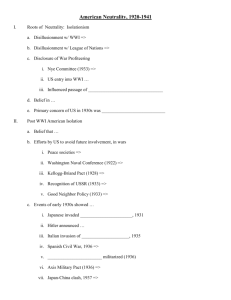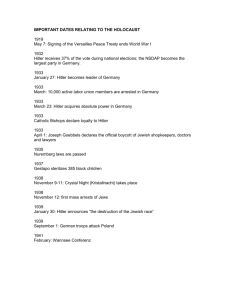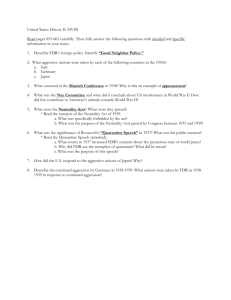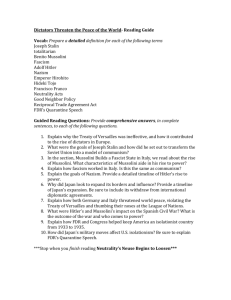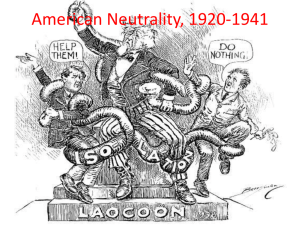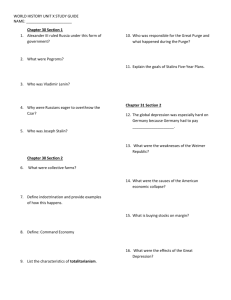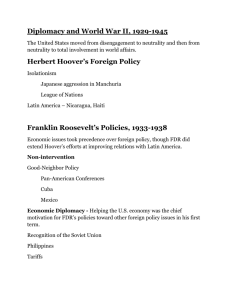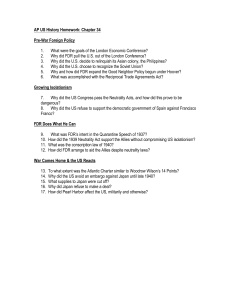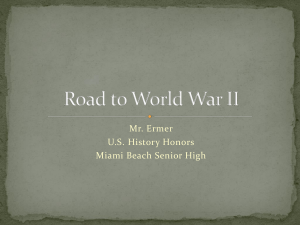Rise of Dictators
advertisement
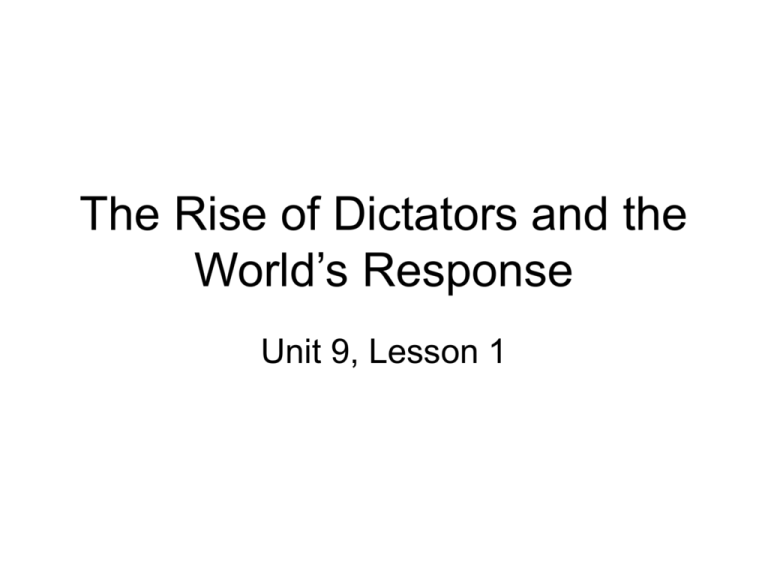
The Rise of Dictators and the World’s Response Unit 9, Lesson 1 Essential Idea • As fascist government became imperialistic, the world, including the United States, reacted insufficiently to stop it. American Foreign Policy in the 1920s • Isolationism – Leaving Latin America • Peace conferences • KelloggBriand Pact (1928) • Fragile peace Japanese Aggression • Invasion of Manchuria • League of Nations response • Stimson Doctrine (1932) FDR and Latin America • Dollar Diplomacy • “Good Neighbor Policy” (1933) – Pan-American conferences – Cuba FDR and International Trade • London Economic Conference (1933) • Soviet Union (1933) • Tydings-McDuffie Act (1934) • Reciprocal Trade Agreements Joseph Stalin • • • • Joseph Stalin Farm collectives Concentration camps Industrialization The Rise of Fascism: Italy • Fascism – Comparison to communism • Italy • Benito Mussolini (1922) The Rise of Fascism: Japan • Military dictatorship – Emperor Hirohito • Response to Great Depression The Rise of Fascism: Germany • Nazi party • Adolf Hitler – Background – Beer Hall Putsch – Mein Kampf Hitler Takes Power • Nazis gain influence • Hitler becomes Chancellor • Reichstag fire • Enabling Act (1933) • Rome-Berlin Axis (1936) • The Rise of Dictatorships German Jews • • • • The Aryan race Eugenics Nuremberg Laws (1935) Kristallnacht (November 9, 1938) Jewish Emigration • • • • Mass exodus Foreign response The St. Louis Failed Emigration Jewish Segregation • Ghettos • Conditions • Mobile killing squads The “Final Solution” • Concentration camps • Death camps • Legacy Fascist Dictatorships Expand • Italy – Ethiopia (1935) • Japan – China (1937) • What is the difference between Germany prior to WWI and after the Treaty of Versailles? • Were the new borders drawn according to ethnicities or national identities? • What countries might Hitler want to invade in order to get “old Germany” back? • • • • • • Germany Expands Impact of Treaty of Versailles Germany militarizes Rhineland (1936) Anschluss (1938) Sudetenland (1938) Hitler’s justification Europe’s Weak Response • Munich Conference (1938) • Appeasement • Neville Chamberlain World War II Begins • NonAggression Pact (HitlerStalin Pact, 1939) • Lead-up to War • Hitler invades Poland (September 1, 1939) • Blitzkrieg • World War II Begins Germany on the Offensive • • • • Winston Churchill Invading France Miracle at Dunkirk Dunkirk Britain vs. Germany • • Battle of Britain Britain American Response • • • • • • Isolationists The Nye Committee (1934) Neutrality Acts (1935, 1936, 1937) FDR’s Quarantine Speech Public reaction American Isolationists American Isolationism • Francisco Franco • Spain falls to fascism (1939) “Neutrality” Evolves • Preparedness • Help Britain? • “Cash and carry” (Neutrality Act of 1939) “Neutrality” Evolves • Selective Training and Service Act (1940) • “Destroyers for bases” deal Election of 1940 • • • • A third term? Wendell Willkie FDR’s campaign Results Creating an “Arsenal of Democracy” • “Four Freedoms” speech • Getting around the Neutrality Acts • Lend-Lease Act (1941) • Lend-Lease • Atlantic Charter (1941) • The Greer FDR vs. the American People? • FDR’s Critics • America First Committee • A Nation Divided
